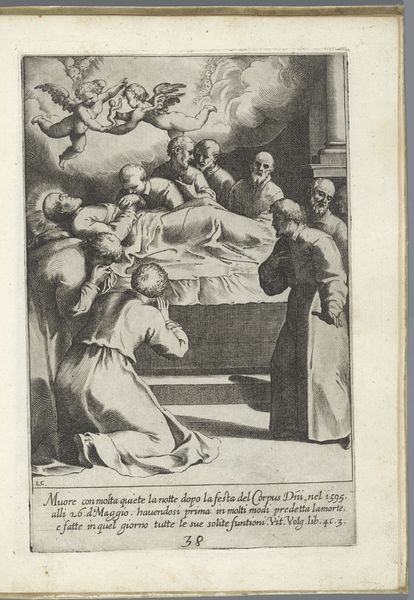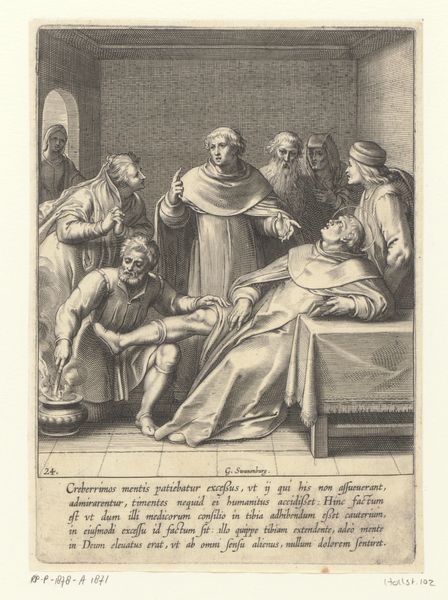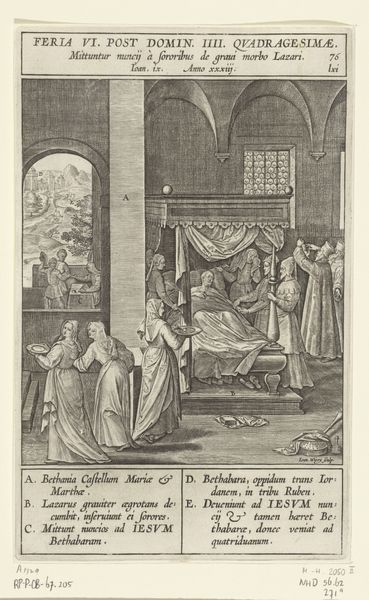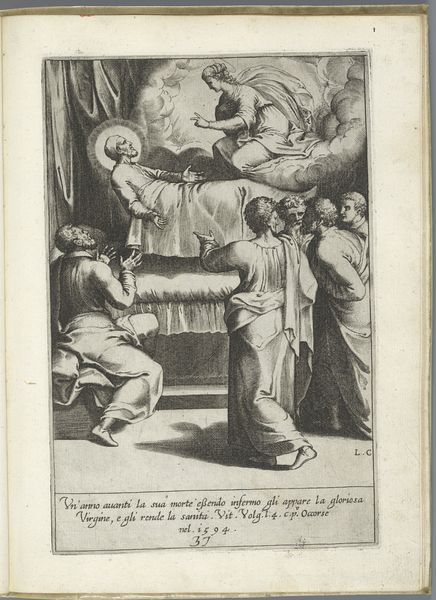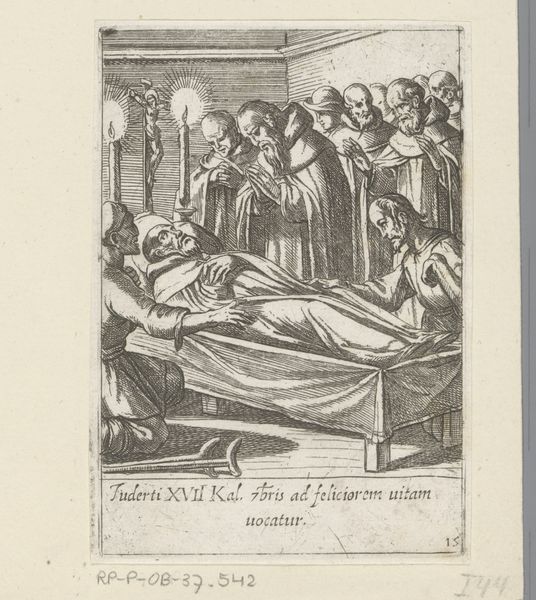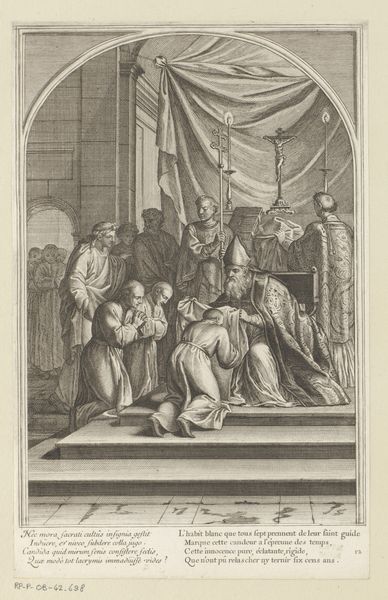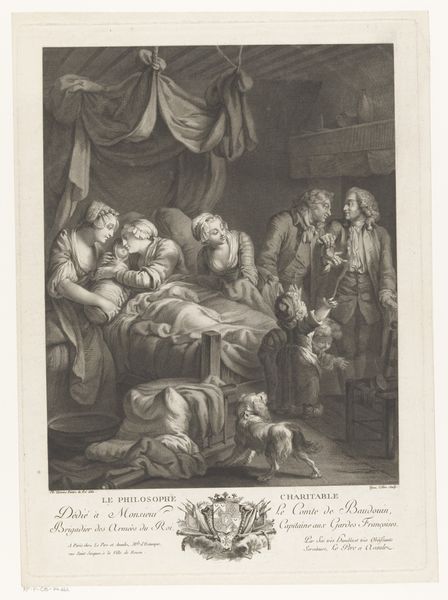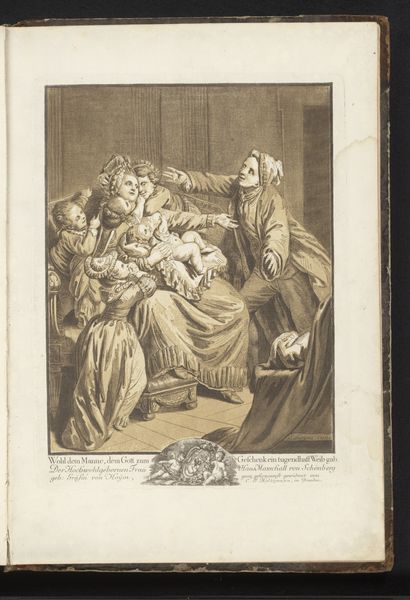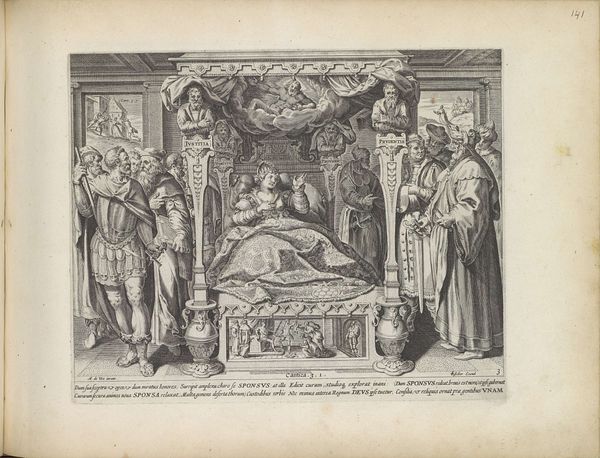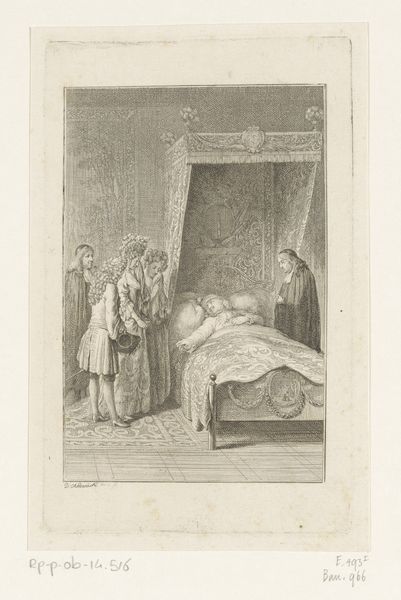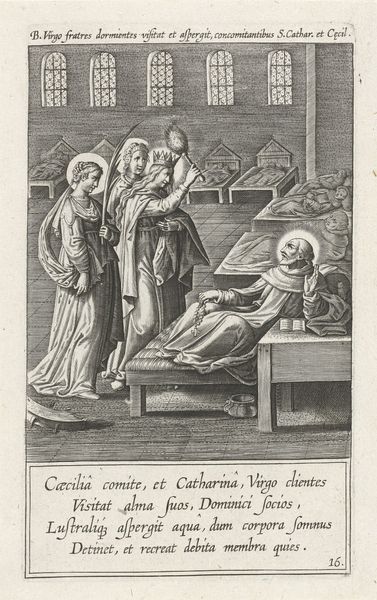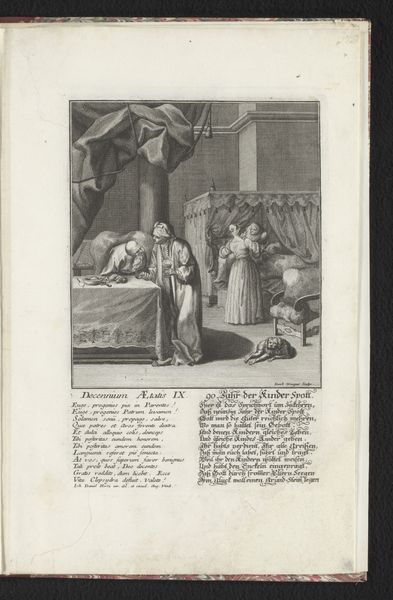
drawing, print, engraving
#
drawing
#
narrative-art
#
baroque
# print
#
figuration
#
history-painting
#
engraving
Dimensions: height 228 mm, width 150 mm
Copyright: Rijks Museum: Open Domain
Editor: Here we have Luca Ciamberlano’s engraving, "Filippo Neri wekt Paolo de Massimi tot leven," made sometime between 1630 and 1641. The cross-hatching creates a dramatic scene. It seems so meticulously made. What can you tell me about this piece? Curator: The very nature of an engraving speaks volumes. Consider the labor invested: the artist meticulously carving lines into a metal plate, the repetitive actions of inking and printing, each step demanding specialized skill. It challenges the very idea of unique authorship we often attribute to “high” art. Think of it more like a mass-produced image serving a purpose within the cultural machine of 17th-century Rome. Editor: That makes sense. It’s almost like early mechanical reproduction serving a spiritual narrative. The social context shaped its creation, right? Curator: Exactly. These prints circulated widely, impacting devotion and the Catholic Counter-Reformation. Instead of solely admiring Ciamberlano’s artistry, consider the print as a commodity, fueling religious fervor. How does understanding the materials and production influence how we perceive its value and authenticity? Editor: I never thought about it that way before – as something produced for a larger purpose. That does make me see it in a different light! Curator: The Baroque era had a complex relationship with these kinds of printed materials; labor, belief, and image economies, are all bound in that engraving. Editor: I’ll remember to think more about how art materials reflect the culture they are produced in. Thanks!
Comments
No comments
Be the first to comment and join the conversation on the ultimate creative platform.

